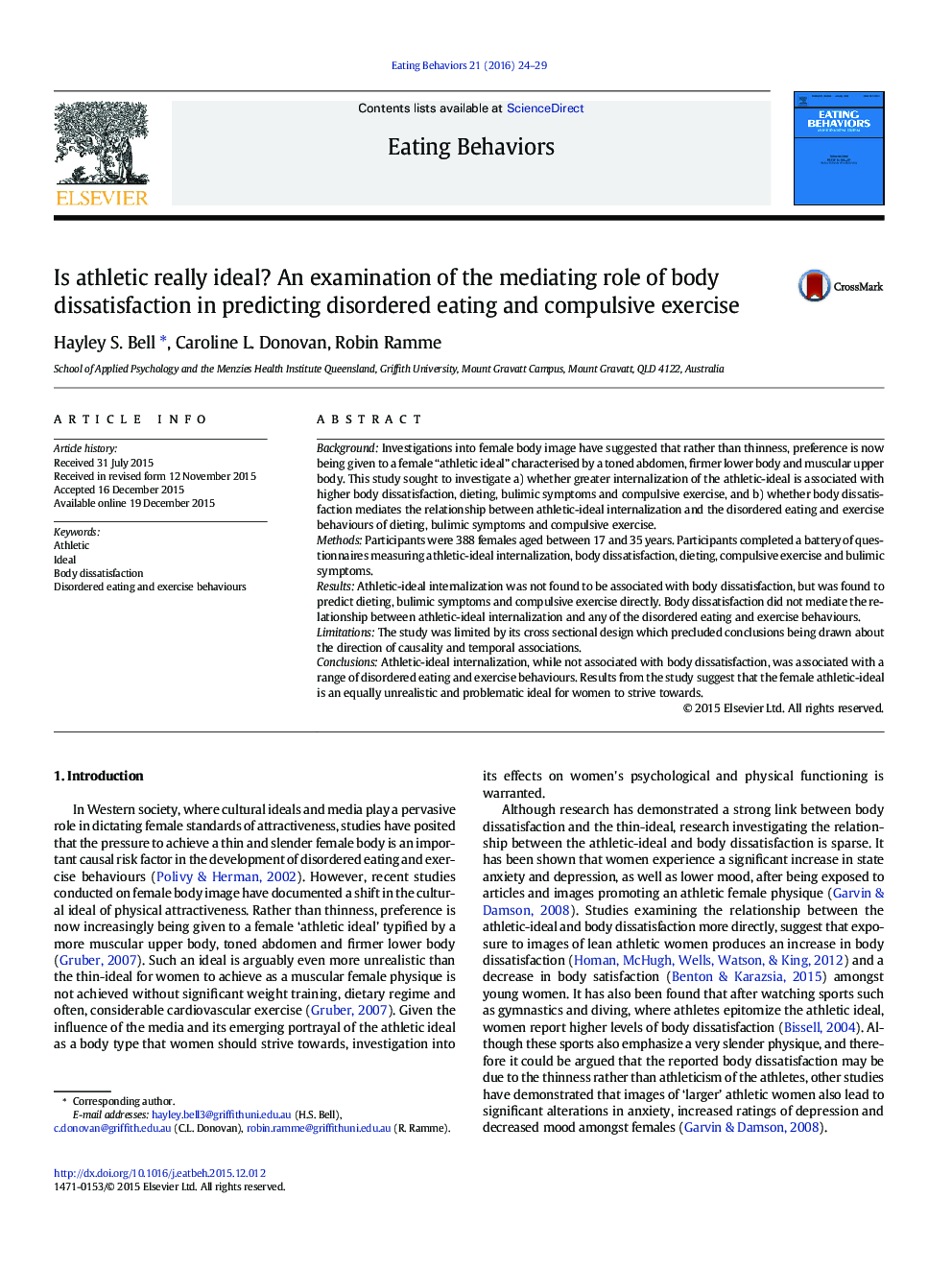| Article ID | Journal | Published Year | Pages | File Type |
|---|---|---|---|---|
| 906225 | Eating Behaviors | 2016 | 6 Pages |
•Examined the relationship between athletic-ideal internalisation, body dissatisfaction and disordered eating and exercise.•Examined mediating role of body dissatisfaction.•Athletic-ideal internalisation predicted disordered eating and exercise behaviours directly.•Body dissatisfaction did not mediate relationship between internalisation and disordered eating and exercise.•Internalisation of the female athletic-ideal is associated with a range of disordered eating and exercise behaviours.
BackgroundInvestigations into female body image have suggested that rather than thinness, preference is now being given to a female “athletic ideal” characterised by a toned abdomen, firmer lower body and muscular upper body. This study sought to investigate a) whether greater internalization of the athletic-ideal is associated with higher body dissatisfaction, dieting, bulimic symptoms and compulsive exercise, and b) whether body dissatisfaction mediates the relationship between athletic-ideal internalization and the disordered eating and exercise behaviours of dieting, bulimic symptoms and compulsive exercise.MethodsParticipants were 388 females aged between 17 and 35 years. Participants completed a battery of questionnaires measuring athletic-ideal internalization, body dissatisfaction, dieting, compulsive exercise and bulimic symptoms.ResultsAthletic-ideal internalization was not found to be associated with body dissatisfaction, but was found to predict dieting, bulimic symptoms and compulsive exercise directly. Body dissatisfaction did not mediate the relationship between athletic-ideal internalization and any of the disordered eating and exercise behaviours.LimitationsThe study was limited by its cross sectional design which precluded conclusions being drawn about the direction of causality and temporal associations.ConclusionsAthletic-ideal internalization, while not associated with body dissatisfaction, was associated with a range of disordered eating and exercise behaviours. Results from the study suggest that the female athletic-ideal is an equally unrealistic and problematic ideal for women to strive towards.
